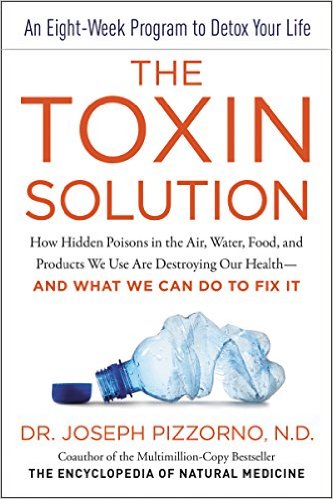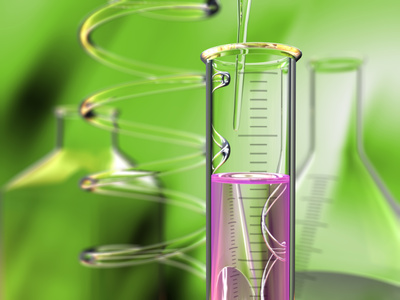 The controversial issue concerning the role of pH in health is one with heated opinions on both sides of the fence. But what are those sides of the fence? Well, there is a strong cohort opposed to the concepts that acidity or alkalinity (measured on a scale of pH) is in some form or another related to health and, in particular, that the food we eat has any bearing on our body’s pH value. The other side is preoccupied with promoting products like pH-regulated water that will supposedly “cure” you of all diseases. Neither position on the matter is doing justice to the facts.
The controversial issue concerning the role of pH in health is one with heated opinions on both sides of the fence. But what are those sides of the fence? Well, there is a strong cohort opposed to the concepts that acidity or alkalinity (measured on a scale of pH) is in some form or another related to health and, in particular, that the food we eat has any bearing on our body’s pH value. The other side is preoccupied with promoting products like pH-regulated water that will supposedly “cure” you of all diseases. Neither position on the matter is doing justice to the facts.
I write about the influence of pH in my book Every Body’s Guide to Everyday Pain. There is no scarcity of research to support the fact that low tissue pH (acidity) is associated with inflammation, which can lead to pain.1-6 This is an extremely relevant point when considering the paradigm shift necessary to recognize early indicators of dysfunction and imbalance — these will help us learn to avoid the perplexing everyday variety of pain that often seems to appear out of nowhere.
 The science of pH in human physiology is complex. There is no easy cause-and-effect scenario to follow, and no straightforward way exists to measure pH in the body in real time. For example, urine pH values do not accurately represent the pH values in your joints and tissues, and salivary pH is not directly representative of your intestinal pH status because normally food is processed by your gastrointestinal tract and, in doing so, the composition of what you ingested has changed. The reality is that the acid/alkaline status of your body is a moving target and is not uniform across all systems. These crude measurements (urine and saliva) act as red herrings and provide—at best—educated guesses about what the body is actually going through at any particular moment.
The science of pH in human physiology is complex. There is no easy cause-and-effect scenario to follow, and no straightforward way exists to measure pH in the body in real time. For example, urine pH values do not accurately represent the pH values in your joints and tissues, and salivary pH is not directly representative of your intestinal pH status because normally food is processed by your gastrointestinal tract and, in doing so, the composition of what you ingested has changed. The reality is that the acid/alkaline status of your body is a moving target and is not uniform across all systems. These crude measurements (urine and saliva) act as red herrings and provide—at best—educated guesses about what the body is actually going through at any particular moment.
One very important truth that every pH “debunker” gets right is that blood pH does not fluctuate. This tight control over blood pH levels is essential to keeping us within the very narrow parameters needed by our cardiovascular system to keep us alive. Keeping our blood pH from fluctuating is so important that, when we are exposed to acidifying influences that could disrupt our blood chemistry balance, an elaborate biochemical dance occurs in all other body systems in an effort to “take the hit” for us. Our body copes in other ways to handle the stress and temporarily becomes compromised in some way to protect the blood pH from potentially life-threatening fluctuations.
What sorts of things cause this kind of pH-shifting biochemical stress? Anything that our cells are exposed to in the course of daily life can cause a shift—air, food, and water act as the three main vectors. Our air is filled with byproducts of industrial exhausts and at different times of the year with complex plant proteins that become airborne and act as allergens. Food comes in many formats in our society of “now” and modern conveniences. Packaging, processing, and preservatives introduce chemical compounds that our bodies were not  designed to tolerate on a regular basis, and what we think of as water is no longer just H2O (two molecules of hydrogen and one of oxygen). Water is generally considered safe, but the measures needed to create safe drinking water in developed countries may also introduce miniscule amounts of foreign molecules into the water supply.
designed to tolerate on a regular basis, and what we think of as water is no longer just H2O (two molecules of hydrogen and one of oxygen). Water is generally considered safe, but the measures needed to create safe drinking water in developed countries may also introduce miniscule amounts of foreign molecules into the water supply.
The key realization here is to understand that the issue isn’t necessarily exclusively about the pH value of these substances themselves, rather that, in large part, it’s the body’s protective responses in the face of biochemical stressors that change our tissue chemistry
Let’s look at a common response to biologic “invaders”: Histamine. Histamine is an irritant produced in response to a wide array of allergens, and evidence suggests that histamine itself presents an acidifying effect.7-9 These inevitable acidic influences have to hit us somewhere and, if not the blood, then where?
An important distinction often missing from these discussions about pH is that blood pH is not the same as tissue pH. Tissues are bathed in interstitial fluid made up of lymphatic and cellular materials (amino acids, hormones, sugars, fatty acids, coenzymes, neurotransmitters, salts, and cellular waste)—none of which equates to blood. In processing biochemical stress from any source—whether dietary, environmental, or emotional—it turns out that the tissues of the body, not the blood, are the most affected.
Armed with these facts about pH in the body and its association with inflammation, it’s compelling to consider the following possibility: It seems that every food theory that aims at decreasing inflammation and enhancing gut and brain health (based on the acidity/alkalinity of your food or not) are successful to at least some degree. Could the true reason for this be because of the net effect on tissue pH? Well, it’s not quite that simple. There’s a catch: People report a wide variety of results. So, does that mean all this food hype is bunk?
It’s certainly not “bunk,” per se, but it’s worth remembering that, if no measurable correlation exists between the acidifying influence of the food itself and a particular person’s body pH, then any results seen (whether good or bad) are likely a factor of that person individual’s biologic response based on his or her unique genetic profile. So, what does that mean? It means that results are highly variable.
Which foods or airborne particles do your cells consider to be allergens (ie, foreign)? Firstly, this is something that changes as we age; secondly, it’s dictated by your genetic profile; and, thirdly, to complicate matters, outside influences (environmental, including stress) can change the responses of your genes to allergens.
These are the facts:
- In general, inflammation is at the root of dysfunction and disease.10
- Tissue acidity provides an environment conducive to inflammation.11
If we can avoid providing the perfect playground for pain and disease, then why shouldn’t we try? Exploring the foods and substances that expose your cells to the least amount of acidifying stress is a very personal journey. The array of widely touted food theories may be appropriate for some people and represent a good place to start, but you may find you’ll require some guidance from a natural medicine practitioner at some point to help you pinpoint what your specific situation calls for and the individual needs of your body.
For professionals in the dietetics field or those in the food industry to claim that what we eat doesn’t affect our health in this way seems a bit ironic and counter to the mission. I hope the conversation continues for the sake of shedding light on ways to minimize biochemical stress—whether that be through dietary changes, lifestyle modification, or in other ways—with the ultimate goal being to increase quality of life for all.
References
- Bray GE, Ying Z, Baillie LD, Zhai R, Mulligan SJ, Verge VM. Extracellular pH and neuronal depolarization serve as dynamic switches to rapidly mobilize trkA to the membrane of adult sensory neurons. J Neurosci. 2013;33(19):8202-8215.
- Ugawa S, Ueda T, Ishida Y, Nishigaki M, Shibata Y, Shimada S. Amiloride-blockable acid-sensing ion channels are leading acid sensors expressed in human nociceptors. J Clin Invest. 2002;110(8):1185-1190.
- Wu WL, Cheng CF, Sun WH, Wong CW, Chen CC. Targeting ASIC3 for pain, anxiety, and insulin resistance. Pharmacol Ther. 2012;134(2):127-138.
- Birklein F, Weber M, Ernst M, Riedl B, Neundorfer B, Handwerker HO. Experimental tissue acidosis leads to increased pain in complex regional pain syndrome (CRPS). Pain. 2000;87(2):227-234.
- Lin CC, Chen WN, Chen CJ, Lin YW, Zimmer A, Chen CC. An antinociceptive role for substance P in acid induced chronic muscle pain. Proc Natl Acad Sci USA. 2012;109(2):E76-E83.
- Steen KH, Steen AE, Kreysel HW, Reeh PW. Inflammatory mediators potentiate pain induced by experimental tissue acidosis. Pain. 1996;66(2-3):163-170.
- Uvnäs B, ed. Histamine and Histamine Antagonists. New York: Springer-Verlag; 1991.
- Hiller A, The effect of histamine on the acid-base balance. J Biol Chem. 1926;833-46.
- Rocha e Silva M, Rothschild HA. Histamine. Its chemistry, metabolism and physiological and pharmacological actions. Springer-Verlag Berlin Heidelberg GmbH. 1966:233.
- Cohen S, Janicki-Deverts D, Doyle WJ, Miller GE, Frank E, Rabin BS, Turner RB. Chronic stress, glucocorticoid receptor resistance, inflammation, and disease risk. Proc Natl Acad Sci U S A. 2012;109(16):5995-5999.
- Jankowski JA, ed. Inflammation and Gastrointestinal Cancers. New York: Springer; 2011.
 It’s a shame that we have come to accept a world where there is such a thing as “everyday” pain, “everyday” disease and “everyday” toxic exposure and that is simply our current reality. But with the help of The Toxin Solution, I believe we can find a new reality.
It’s a shame that we have come to accept a world where there is such a thing as “everyday” pain, “everyday” disease and “everyday” toxic exposure and that is simply our current reality. But with the help of The Toxin Solution, I believe we can find a new reality.



